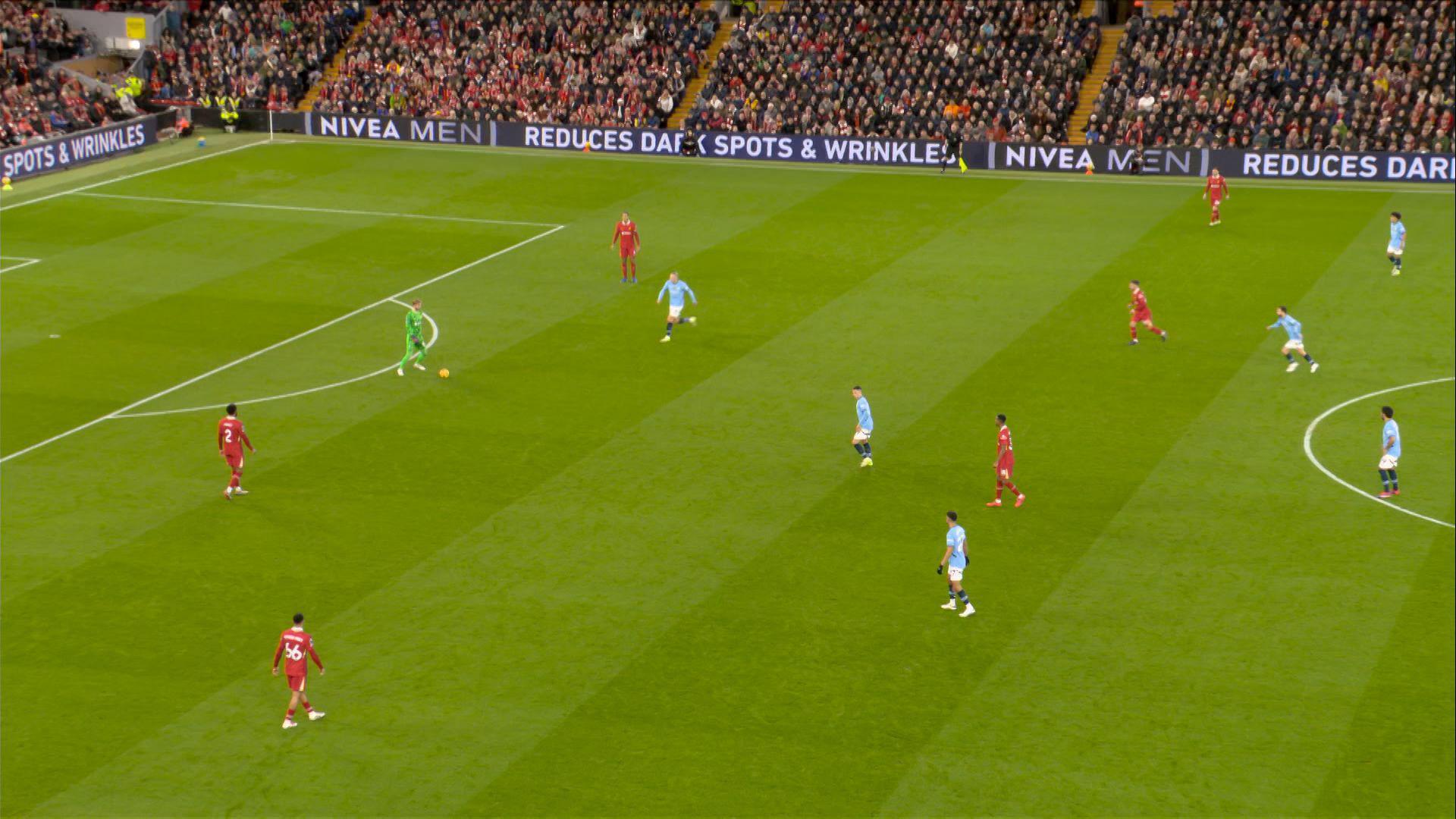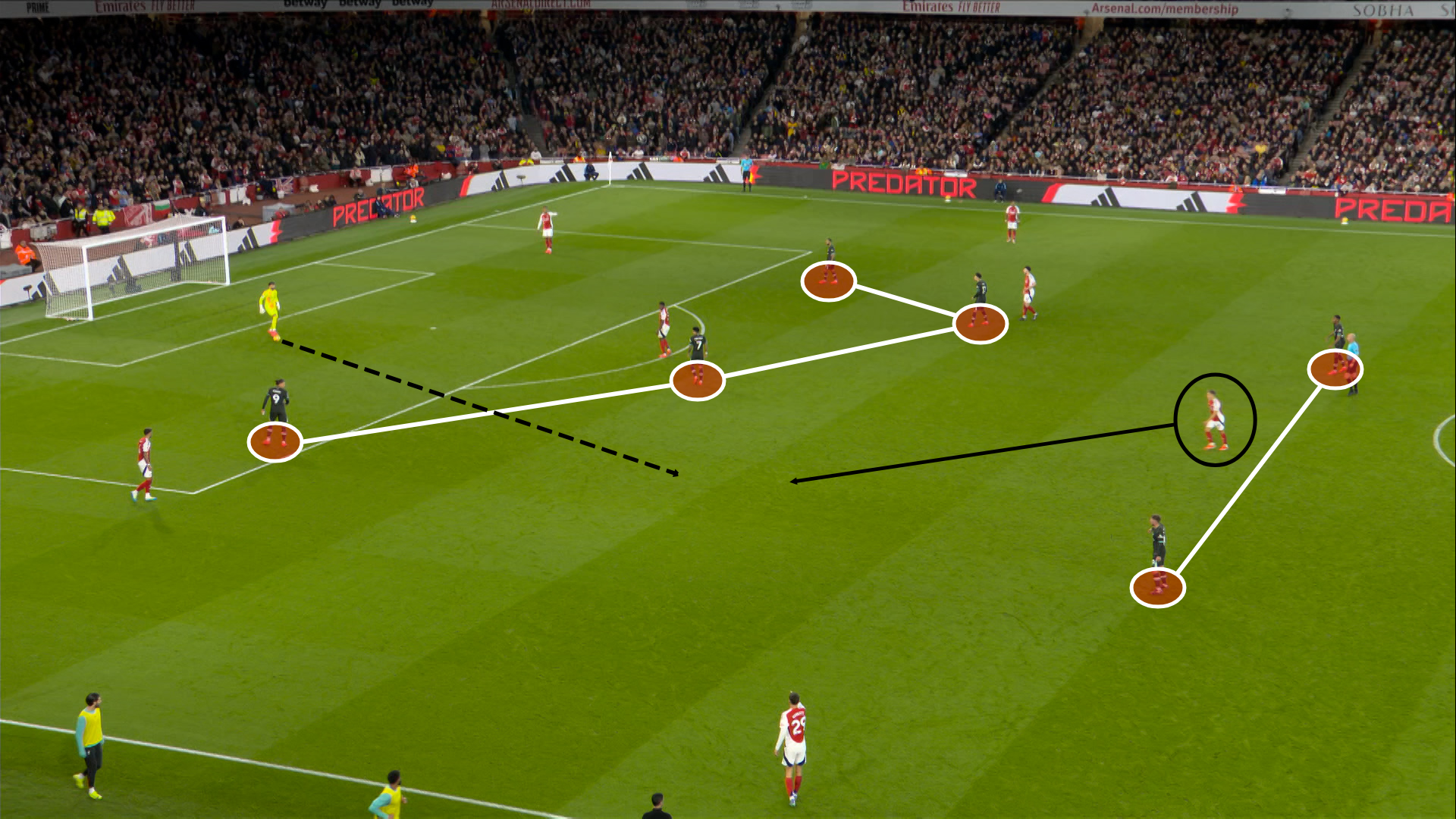
Spot the Difference: Liverpool’s Tactical Adjustments Under New Management
Liverpool‘s transition from Jurgen Klopp to Arne Slot has unfolded with commendable fluidity.
In just 23 matches across all competitions, the Reds have seized victory in 19 of them, with a solitary defeat tarnishing an otherwise stellar record, all while trading in Klopp’s famed ‘heavy metal football’ for a nuanced and sophisticated tactical approach.
But what lies beneath this transformation? How has Slot orchestrated this success? And what hurdles might they face going forward?
Let us delve into the critical tactical shifts Liverpool has embraced under Slot’s tenure.
Is there a flavor of De Zerbi in Slot’s Liverpool?
In Slot’s maiden media appearances, he echoed sentiments of admiration for both Klopp and Pep Guardiola and their profound impacts on his football philosophies. Yet, it’s evident that the innovative tactics of former Brighton manager Roberto de Zerbi have also left an indelible mark.
De Zerbi’s teams have garnered acclaim for fluid play, deftly maneuvering through opposition presses by having their goalkeeper or center-backs retain possession. This tactic necessitates waiting for an opponent’s advance before executing precise passing—an approach fraught with risk but rendered more palatable by the indisputable talent of modern keepers such as Alisson and Caoimhin Kelleher.
Moreover, Slot is armed with patient center-backs like Virgil van Dijk and Ibrahima Konate, both of whom exhibit composure on the ball and relish the demands of this daring strategy.

This ball-retention strategy in their own half has already bestowed multiple benefits upon Liverpool.
After 15 Premier League matches, a telling shift in statistics bears out Liverpool’s newfound inclination to exercise greater control in their defensive third:
Last season, they averaged a mere 117.2 passes per game in their defensive third. Fast-forward to the present day, and that number has surged to 133, suggesting that even a subtle adjustment can yield significant improvements.
Interestingly, Slot’s side is taking fewer attempts at goal, with an average of 15.2 shots per match, down from 20.6 in the previous season. This decrease may reflect a shift toward a more controlled and pragmatic philosophy.
Nevertheless, this is not to say that Liverpool have abandoned their trademark thrusts of transition and direct attacks; rather, the mechanics by which they craft these advantageous scenarios have rejuvenated their playstyle.
How has Slot furthered Klopp’s legacy?
Elite teams often employ a 4-2-4 structure when out of possession, a hallmark of Klopp’s system last season that Slot has opted to perpetuate. Yet, his successor’s interpretation introduces a more temperate and cautious approach.
Liverpool’s revamped 4-2-4 configuration emphasizes maintaining organization while strategically obstructing key passing channels rather than relentlessly pressing high to reclaim possession.
Liverpool’s revamped 4-2-4 formation under Slot offers robust coverage and aims to exploit lapses in opposition defenses.
A key aspect of this configuration involves the number 10 advancing to join the forefront, compelling the opposition to choose between two risky strategies: either they send the ball long, increasing the chances of losing possession, or they channel the ball into the wide areas—where Liverpool excels in pressuring and reclaiming possession.
Nonetheless, this approach has left Liverpool vulnerable at times. Arsenal and Chelsea have successfully neutralized the pressing from Liverpool’s front line, progressing the ball through the center with relative ease.
Slot acknowledges these setbacks, remaining confident in his defense’s capacity to adjust to such challenges.
“We aim to command the game, to be aggressively defensive,” he stated ahead of Liverpool’s Champions League encounter with Bayer Leverkusen.
“However, if our aggression wanes, we risk positioning ourselves too high. We strive to maintain our pressing intensity, but if we are caught a fraction too late or allow passing lanes to open, teams can exploit that.”
“The positive takeaway is that I consistently see my players diligently retreating to deny the opposition scoring opportunities.”

Liverpool’s tactics above present weaknesses that require addressing, as illustrated when Arsenal’s Leandro Trossard cleverly eluded the press.
A closer look at crucial performance metrics tells a revealing story, particularly concerning PPDA (opponent passes allowed per defensive action), which points to a noticeable relaxing of their pressing style.
Last season, Liverpool ranked second in the league with an average of 8.9 passes for the opposition per game; now they are allowing 10.8, indicating nearly two additional passes before engaging in defensive maneuvers.
In terms of high turnovers, Liverpool previously finished third in the league, recording 392 across 38 matches. This season, they have amassed just 127 and currently occupy the seventh position in the same statistic.
Additionally, there’s been a decline in their dribble challenges, with an average of 20.2 per game last season tumbling down to 17.6 this year.
While Slot encourages Liverpool’s players to advance higher up the pitch, he advocates for a more cerebral approach than the all-out aggression we witnessed under Klopp. Timing and patience are now paramount for exploiting opposition weaknesses.
This method seems more sustainable for the medium and long term, reducing the risk of a repeat dip in form that left them outside the title race last season.
What roles have evolved in Slot’s ‘new’ Liverpool?
Gravenberch Takes on the ‘Number Six’ Role
Slot’s tactical alterations have seen a transition to a 4-2-3-1 formation, diverging from Klopp’s favored 4-3-3 that previously dominated the team’s setup.
Consequently, Ryan Gravenberch, once operating as a fleet-footed ‘number eight,’ now choreographs play as a ‘number six’ from a deeper midfield position.
Gravenberch’s attributes—his robustness under pressure, spatial awareness in both offensive and defensive contexts, coupled with sharp passing—make him an indispensable cog in Slot’s masterplan.
Transitioning Gravenberch into a deeper playmaking role has liberated Alexis Mac Allister, who can now influence matches higher up the pitch. Remarkably, Gravenberch’s duties parallel those that Mac Allister fulfilled last season.
Operating within a deeper zone grants Gravenberch the room to maneuver effectively, enabling him to execute progressive carries that propel Liverpool’s offense forward.
However, the 22-year-old is still honing his craft in this role, occasionally faltering against high-pressure setups, as seen during the thrilling 3-3 draw at Newcastle, which can stymie Liverpool’s buildup play.
A Return to Tradition for Alexander-Arnold
Following stints in midfield for both Liverpool and the national team last season, Trent Alexander-Arnold has reverted to functioning as a more “traditional” right-back under Slot’s stewardship.
While this adjustment promotes defensive solidity, it hasn’t suppressed his prowess from deeper positions—exemplary for orchestrating play from the back or transitioning defense to attack.

With a return to a more traditional role, Trent Alexander-Arnold showcases his qualities in playmaking—evident in his pass distribution against Bournemouth.
Yet, Slot has granted Alexander-Arnold the freedom to venture into central areas during select matches.
Against Manchester City, for instance, the 26-year-old exploited considerable space in Liverpool’s half, executing audacious long-range passes to his forward teammates.
When Alexander-Arnold treads into central domains, it catalyzes one-on-one duels for Salah, while simultaneously nullifying potential counter-attack vectors through the middle.
Thus, while his role may have reverted to tradition, Alexander-Arnold remains a pivotal component in Liverpool’s strategy.
Salah: The Unrivaled Star
With an impressive tally of 22 goals and assists to his credit in the top flight, Mohamed Salah has embarked on the season with unyielding determination.
Opta’s metrics denote Salah’s dominance for Liverpool, highlighting his excellence in:
-
Shots from open play per 90 – 3.15
-
Non-penalty expected goals per 90 (npxG) – 0.54
-
Shots on target per 90 – 1.76
While Salah’s production metrics have been consistently robust, the tactical tweaks instituted by Slot have amplified his ability to isolate against defenders more frequently.
This evolution is anchored partly in Alexander-Arnold’s elusive movements—overlapping Salah or inverting himself to draw defenders away and thereby create pockets for the Egyptian to exploit.
With nine assists already this season, Salah is just four shy of equalling his career-best total of 13 assists in a single season for Liverpool (achieved in 2021-22), underscoring his dual threat as both creator and finisher.
In one-on-one encounters, Salah possesses a competitive edge, and situating him in such confrontations allows Liverpool to extract maximum offensive potency from their luminary.
Ultimately, Liverpool, alongside Slot, stand in a robust position to exploit weaknesses revealed by rivals such as Manchester City and Arsenal throughout the season.
By instilling a greater degree of control and redefining roles according to players’ attributes, Slot’s strategies have borne considerable fruit.
Sure, there remains scope for enhancement, yet there is much for the Anfield faithful to celebrate already.





